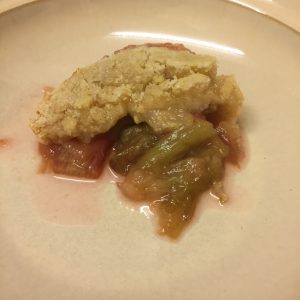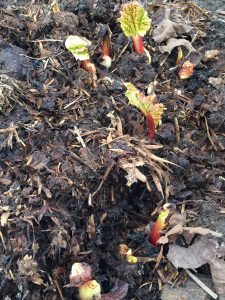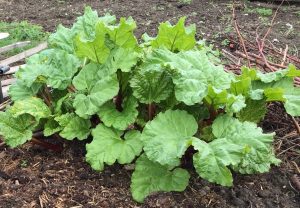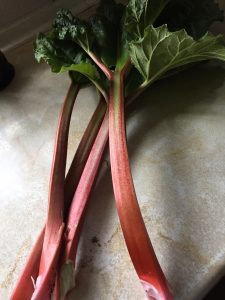It feels like it’s happened a lot on our plots this spring, maybe more so than usual, but quite a few rhubarb plants have sprouted flower stalks. Poor rhubarb, it’s only doing what comes naturally and that is to ensure it’s own propagation, but seeing a flower head sprout in your rhubarb patch is not something an allotment gardener wants to see.
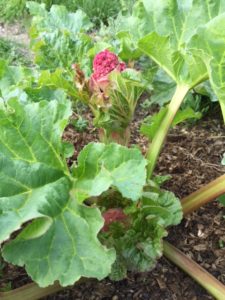
There are several possible reasons for this. Firstly it is more like to occur in more mature rhubarb plants where the crowns are at least three years old.
Some traditional, old-fashioned varieties are more prone to bolting but if there’s one plant you are likely to inherit on an allotment, it’s a rhubarb and unless you plant a crown yourself, or grow one from seed, you are rarely likely to know the variety of the plant you have inherited.
As it is a spring vegetable (yes rhubarb is classed as a vegetable even though it’s most commonly eaten as a dessert), rhubarb does prefer cooler weather. This last winter has been cooler than some recent ones, particularly with the amount of snow we have had, but combine that with the warmer temperatures we’ve had this month, and it might just confuse a plant enough to think ‘Hey! I need to produce some seed!’
The main reason why allotment gardeners want to avoid their plants producing flower stalks is that in doing so all the plant’s energy is diverted towards producing that flower stalk and away from producing leaf stems. And when the only reason you are growing a plant is to harvest its leaf stems, that’s not what you want to happen. It will also weaken the crown as a result.
So what can you do if you find your rhubarb has bolted? The first thing is to cut out the flower stalk straightaway and do so as close to the base of the plant as possible. Use a knife as the stalk is thicker and harder to remove by twisting and pulling as you would do when harvesting the leaf stalks.
Ideally you want to remove those flower stalks as soon as you spot a seed pod forming. Again use a sharp knife to cut it.


If your crown is a few years old, dividing it when it’s dormant over the winter will ‘reset’ the maturity clock and should ensure it doesn’t bolt again for a few years. In fact dividing your crown every five or six years is good practice anyway.
And if you’re too late and you have a lovely long flower stem? Cut the stalk out as before. Apparently rhubarb flowers last a long time and make an unusual flower arrangement!


